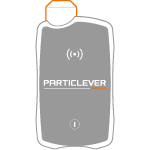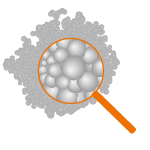Fibers


Fibrous forms may take on different appearances. In particular, the fibers may agglomerate and form aggregates and agglomerates (such as balls of carbon nanotubes or agglomerates of carbon nanofibrils or nanocrystals) which are not fibrous.
The fibers may come from already-fibrous materials, or may be residue from processes. Some processes may generate fibrous particles even though the original materials were not fibrous.
Any exposure to isolated fibrous forms, particularly nanofibers, will be closely watched. Asbestos is one of the best-known and most dangerous forms.
The standard technique for fibrous shapes is to use an electron microscope. This makes it possible both to characterize the fibrous nature, whether isolated or in agglomerates, and to quantify it as a number of particles per cm3 (standard metric for fibers).
When the fibers are agglomerated, the mass metric once again become standard, particularly for carbon nanotubes where the mass of elemental carbon will be quantified when using large quantities.
To understand definitions related to nanoparticules, their aggregates and agglomerates, see in our Nanoparticles dossier “Nano definitions”.



